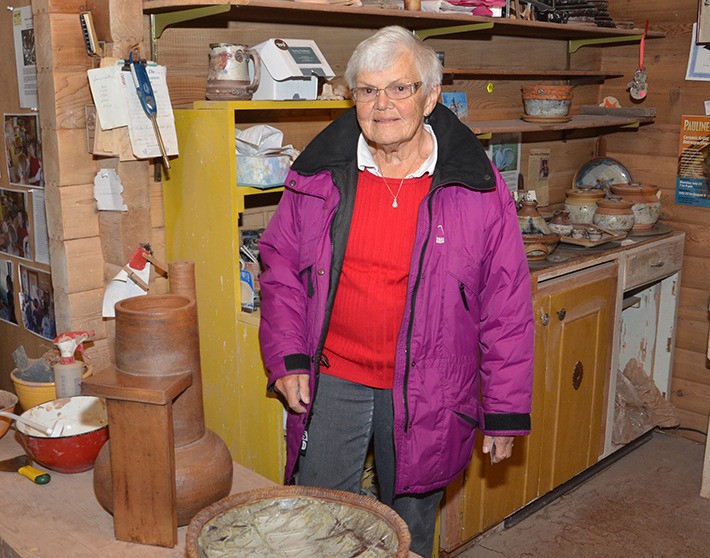It was a long journey before Pauline Newhouse found her calling, but after a career as a nurse and as a stay-at-home-mom, the valley artist finally molded herself into a potter.
“When I grew up, there were only a few things that a girl could do; (become) a teacher, a secretary, or just get married,” she said. “I decided to go into nursing.”
She wasn’t exactly sure what kind of art she was ready to make, but once her children had outgrown the need for her to stay home, Ms. Newhouse was ready for a fresh start.
Until 1986, Mrs. Newhouse was a part-time valley resident, crafting her newfound talent for pottery in the basement of her Edmonton-area home. Before becoming a full-time citizen of Invermere, she had recently finished studying a fine arts program at the University of Alberta.
After Mrs. Newhouse and her husband built a bigger home beside their Invermere cabin and started calling the valley home, Mrs. Newhouse moved her pottery studio into the cabin.
“I like to make things and work with my hands, and you can make anything you want with clay,” she said. “It makes a different shape with every move you make; the negative space is as important as the solid space.”
Through friendships forged with some of the teachers that taught her grandchildren at Eileen Madson Primary, Mrs. Newhouse began giving young students art tours through her home studio. Adults still get to visit the studio each year during a stop on the Columbia Valley Arts Council’s annual Tour of the Arts.
Though many of her creations are sculptures and decorations, Mrs. Newhouse generally produced functional items, such as cookware and dishware.
“I like leaving the raw rims, leaving the clay exposed at the edge,” she said. “Little impurities make speckles come through in the design.”
The “raw” finish resembles a rustic appearance and texture. Mrs. Newhouse said that she’s experimented with many glazes over the years, and has adopted a limited selection with which she has become comfortable.
A book was created by Mrs. Newhouse’s granddaughter which tracks her progress as an artist. It documents a mug that was one of her first pieces of work.
Mrs. Newhouse said she can think of all sorts of new ideas, but is finding it increasingly difficult to carry out the manual labour that’s a part of working with clay, such as carrying heavy equipment.
“It’s heavy, hard work,” she said.
Since becoming a clay artist, she’s ceased her pursuit of wood carving, but the three-dimensional work will always be her forte, she said.
